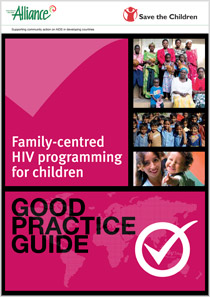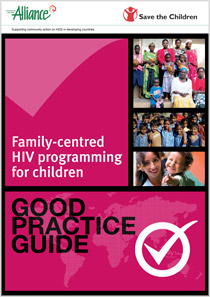Good practice guide: HIV programming for children

This guide contains information, strategies and resources to help HIV programmers implement family-centred HIV programming for children.
This guide is one of a series of good practice guides, and contains information, strategies and resources to help HIV programmers implement family-centred HIV programming for children.
The importance of family in the lives and development of children has long been recognised, as well as the need to strengthen a family’s ability to care for their children. However, the HIV response has so far assembled only limited evidence and guidance for family-centred programming for children.
Historically, programmes working to meet the needs of children affected by HIV have targeted individual children to provide direct support, sometimes bypassing their family. Paediatric treatment and services for children have been delivered separately to those for adults. Care and support for ill people at home has not addressed the needs of children, many of whom are involved in caregiving.
Recent evidence suggests that outcomes for children affected by HIV could be improved by working with families as well as individual children. Our focus needs to shift towards supporting families to care for children, providing services that consider the needs of the whole family rather than only individuals within it.
This family-centred approach builds on relationships within the family to maximise the services delivered to children. Working with families in this way is the basis of a family-centred approach.
This guide is also available in French.
This article was written as the International HIV/AIDS Alliance, before we changed our name to Frontline AIDS.


